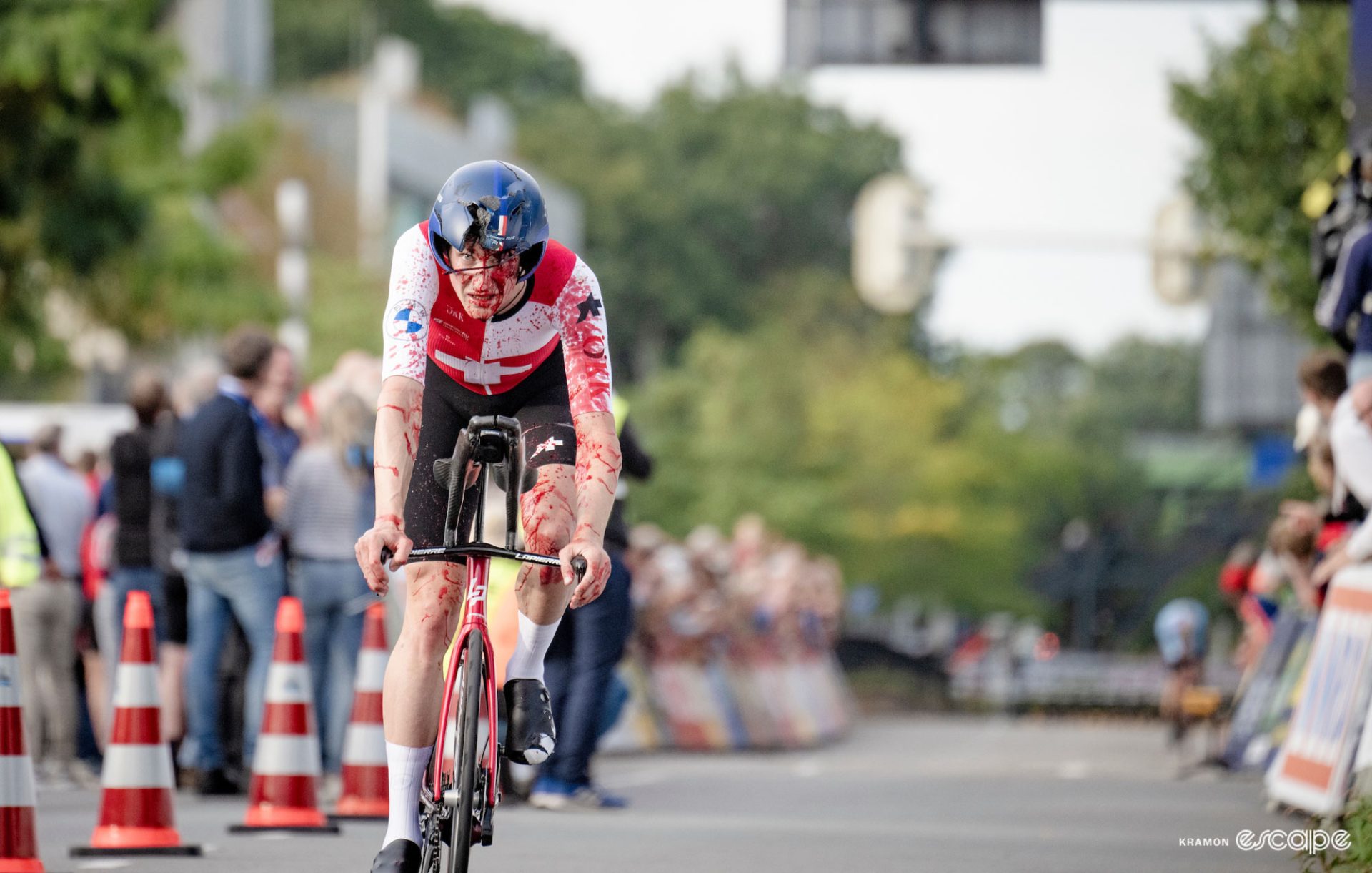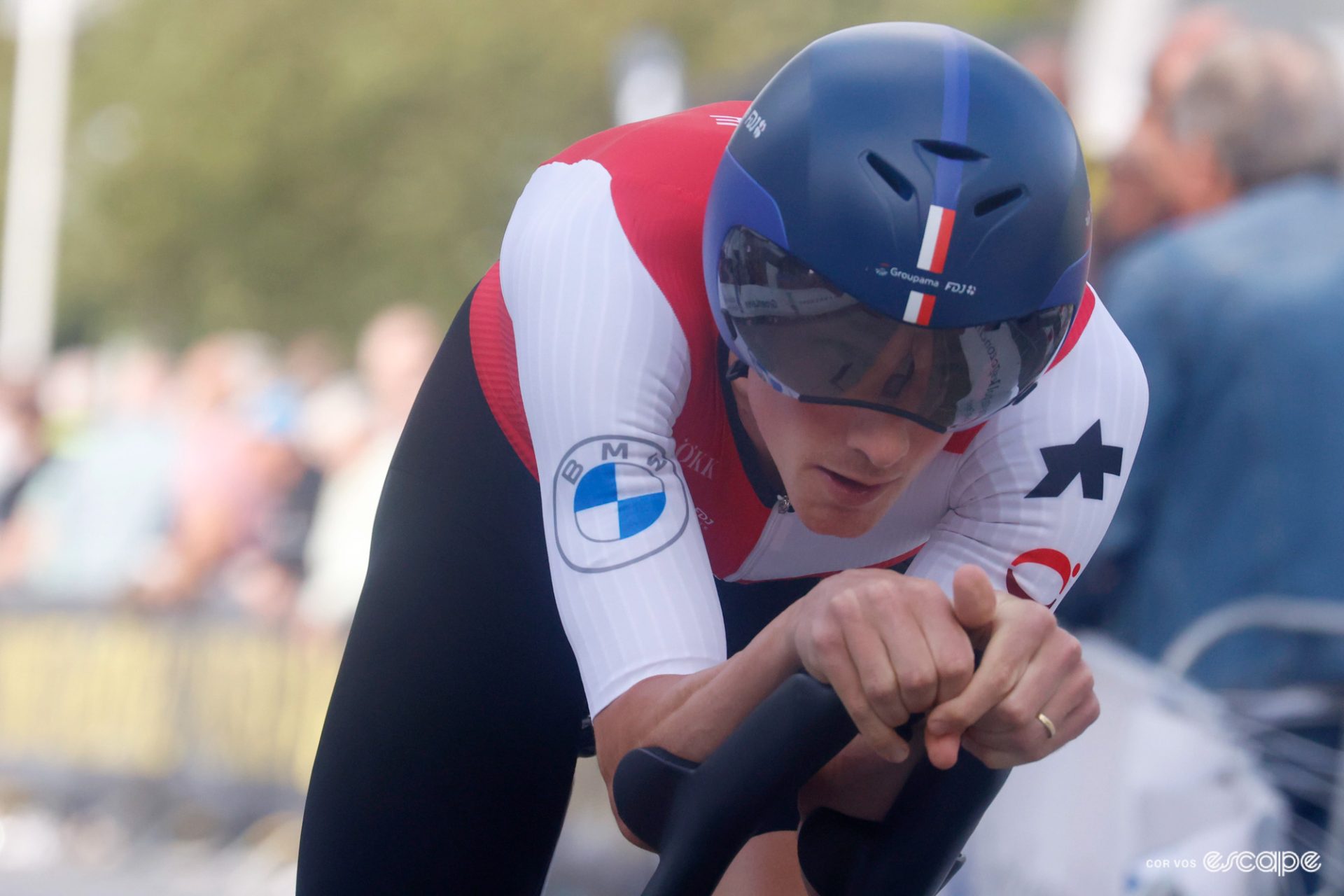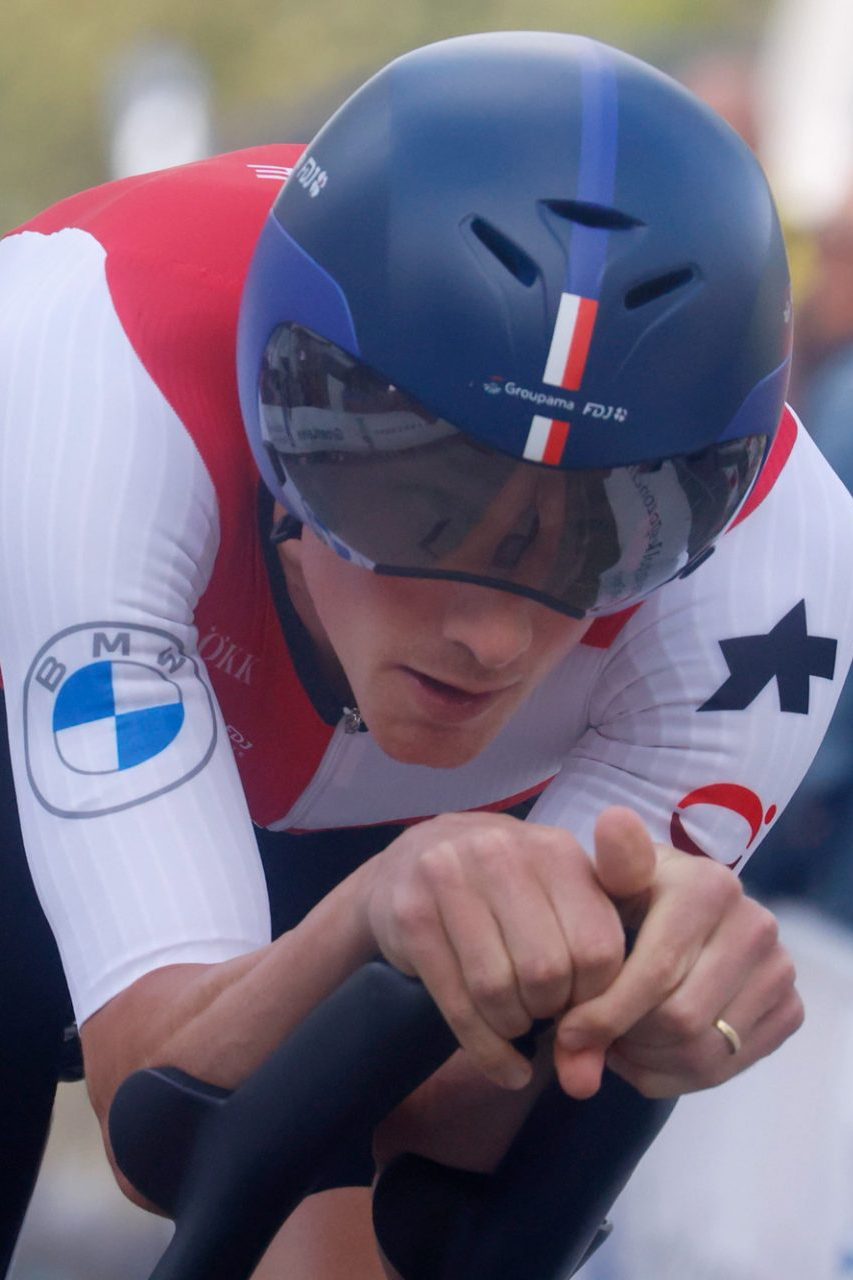Stefan Küng has spoken for the first time on his crash during the European Time Trial Championships that ultimately ended his season. Küng suffered a concussion as well as hand and skull fractures that were only diagnosed after he had finished the time trial. To add insult to injury, he only later discovered he had also lost his wedding ring. But it is his description of the crash that is perhaps most harrowing now that he has recovered and is back on his bike.
The 29-year-old explained to Swiss media outlet SRF that the crash happened due to a “a guiding problem,” and that during a time trial, he is “basically blind,” only able to see a few metres ahead “due to the position I have to hold.” That statement both highlights a problem many suspected led to Küng’s crash and turns the spotlight on the UCI.
Can/will the UCI continue with its current TT regulations, given the rider at the centre of the most high-profile example of the safety issues they may present has said it was his position that led to this crash?
Küng has put the UCI in a difficult spot, first by adopting a head-down tuck that led to the crash and now for freely admitting it was this position that caused said incident. Of course, we applaud his honesty, even if would have been difficult to argue otherwise, but without seeing the complete interview, it remains to be seen if Küng feels the crash was a lesson learned. Detailing how the crash happened seems the perfect opportunity for Küng to plea to other riders to learn from his crash. That may well come.
The law of unintended consequences
In Küng’s defence, he isn’t riding head down because it’s fun. Küng has been knocking on the door of world-level TT success for years, seemingly always coming up just short. For years, the 1.93 m/ 6′ 3″-tall Küng was hampered by the one-size-fits-all TT regulations that meant shorter riders had more room to adopt aggressive positions than taller riders like Küng. But a change in the UCI regulations this year categorising riders into three height categories was intended to level that playing field. The new regs meant riders in Küng’s height category three had additional reach and extension height and angle to play with.
That extra front-end freedom meant Küng could now adopt a more aero position and also get his head closer to his forearms and reduce the watts:CdA deficit to some of those who had narrowly pipped him in previous championships. In other words, while the old regs unfairly penalised Küng, the new regs gave him the opportunity to close that gap, but with some unintended consequences.
Compounding the problem the UCI now faces is that it set the precedent by which it is now surely bound in introducing its “puppy paws” and “super tuck” bans in early 2021. Those bans were introduced on safety grounds. While I don’t recall a major crash as the result of a rider using either position, the UCI claimed it was intervening before such an incident happened and because it was aware of reports of amateur or junior riders putting themselves at risk, having seen their idols adopting such positions.
Fast forward to Stefan Küng and the Euro Championships. Not only were there calls to ban the head-down position before his crash, but Küng has now admitted those head-down safety grounds many had highlighted were the cause, even if he suggests the blame also lay with the white lines on the road or the barriers.
The issue for the UCI is that there is no simple answer. I cannot think of a measurable and enforceable regulation to ensure riders look where they are going. There are options that might well act as a deterrent but ultimately prove as enforceable as thou shall not grease one’s chain.

As I see it, the UCI has just two choices: relax its decades-old stranglehold on innovation and technology, opening the door for riders to adopt other positions or find other ways to achieve the head-down aero gain without compromising their vision. Even that may not solve the issue as dropping one’s head in line with one’s torso is often going to provide an additional gain but also makes it very difficult to retain a line of sight.
The other option is to double down and make the regulations even more restrictive. In all likelihood, such a move only creates new issues, indirectly outlawing other non-problematic elements of time trialling and creating more confusion for all, not to mention work for commissaries on race day. Readers of this website will already know this writer’s views on that option.
There are pros and cons to each approach, and, as the UCI should know all too well, every attempt at regulating usually comes with some unintended consequences. But can a governing body do nothing now given the existence of such compelling evidence? Truthfully, I don’t know.
The head honchos in Aigle were probably quietly hoping Küng’s crash would prove the self-policing wake-up call riders and teams needed. Küng’s comments may well now have excluded that option. How the UCI responds, only time will tell.
Escape Collective has asked the UCI if it plans to review its time trial regulations but has not yet received a reply.
Did we do a good job with this story?


